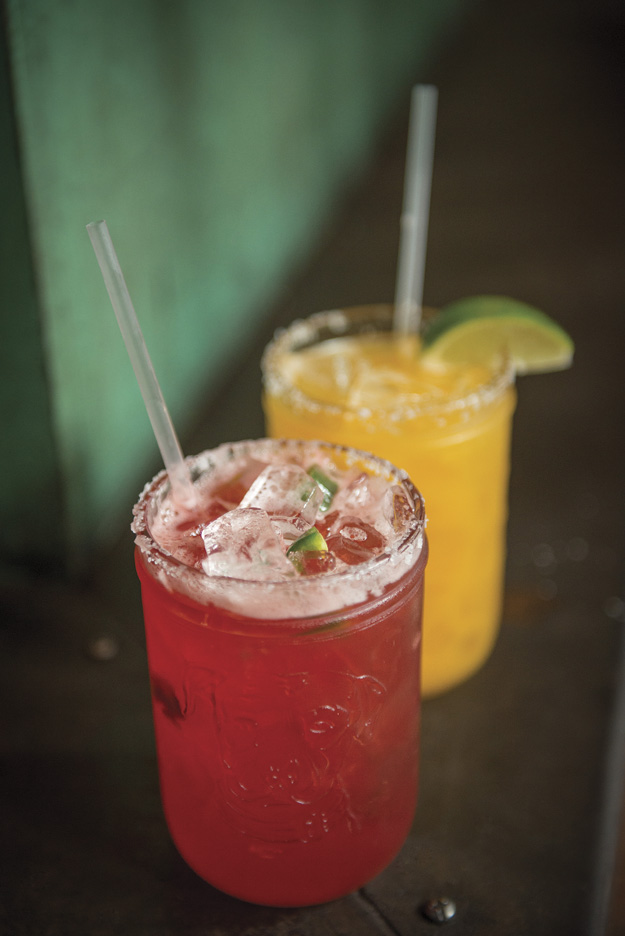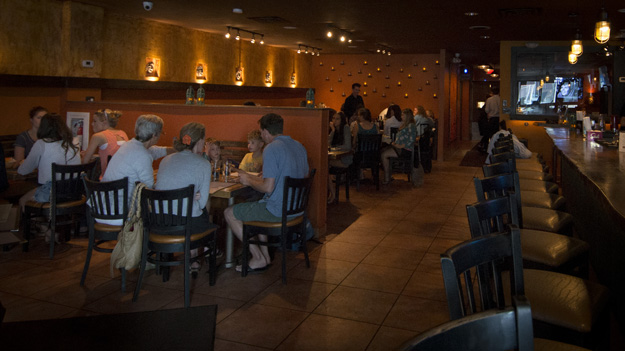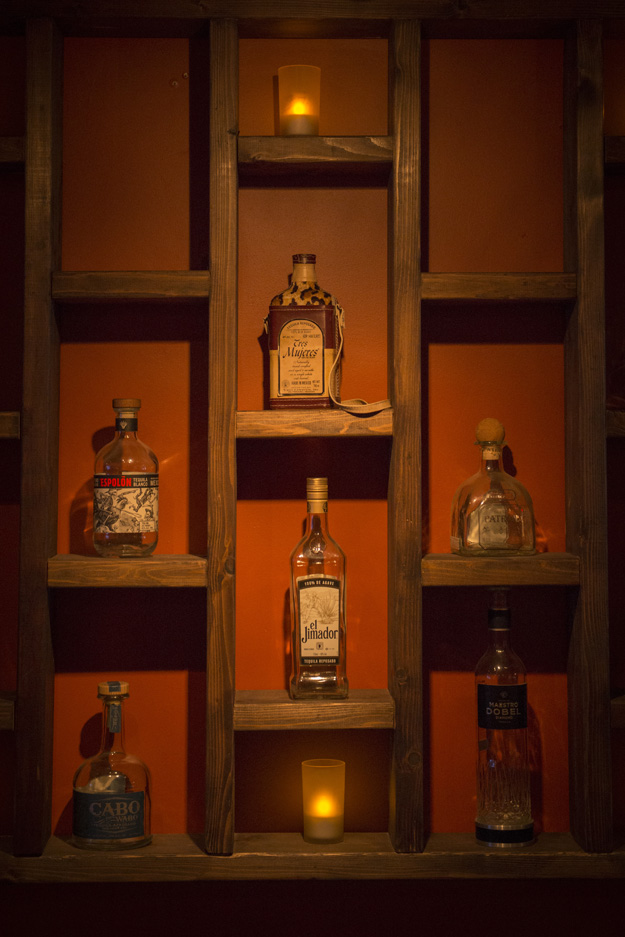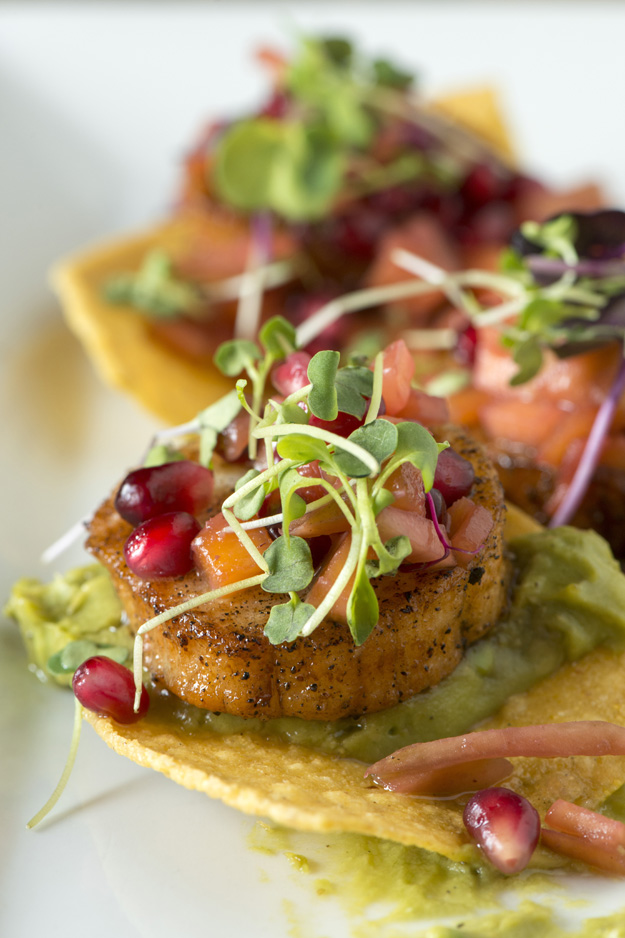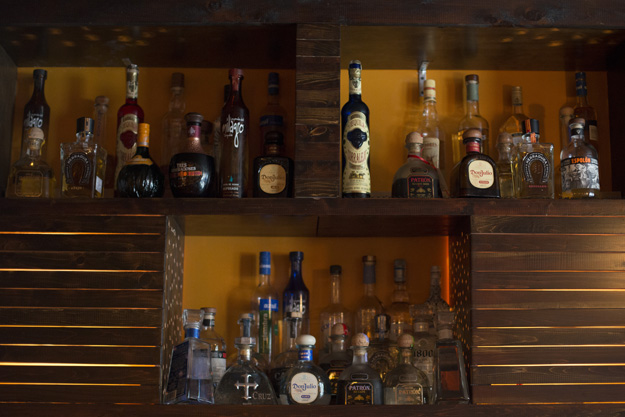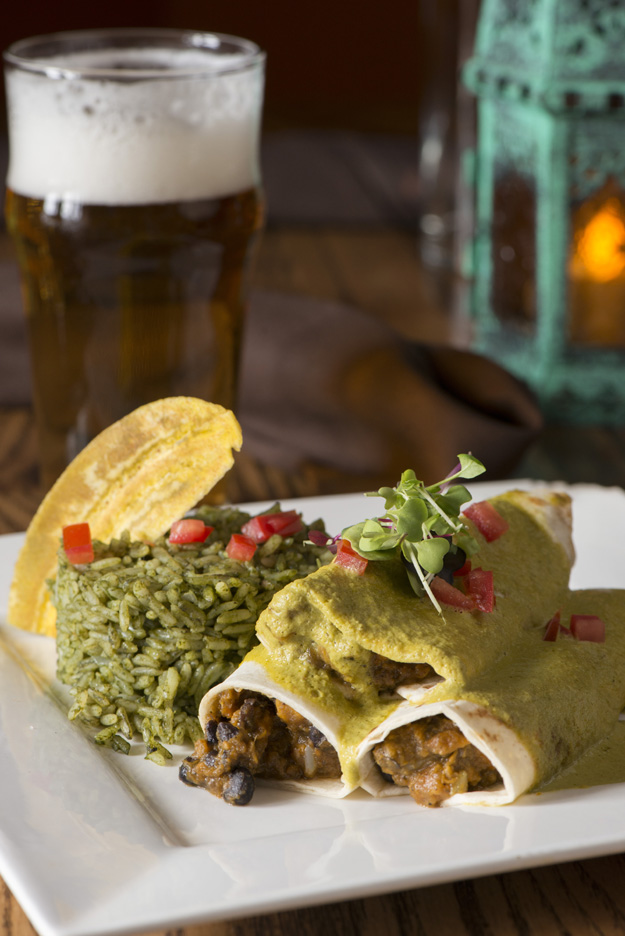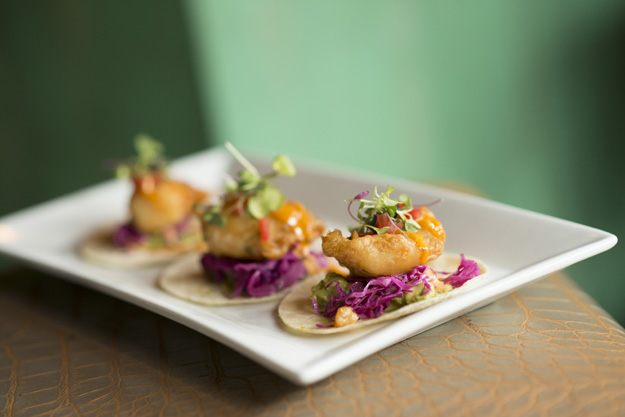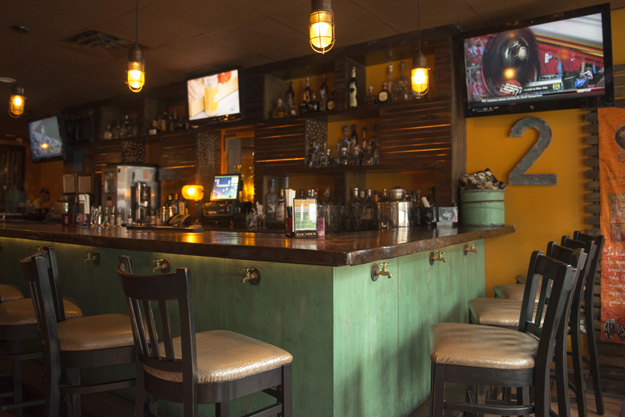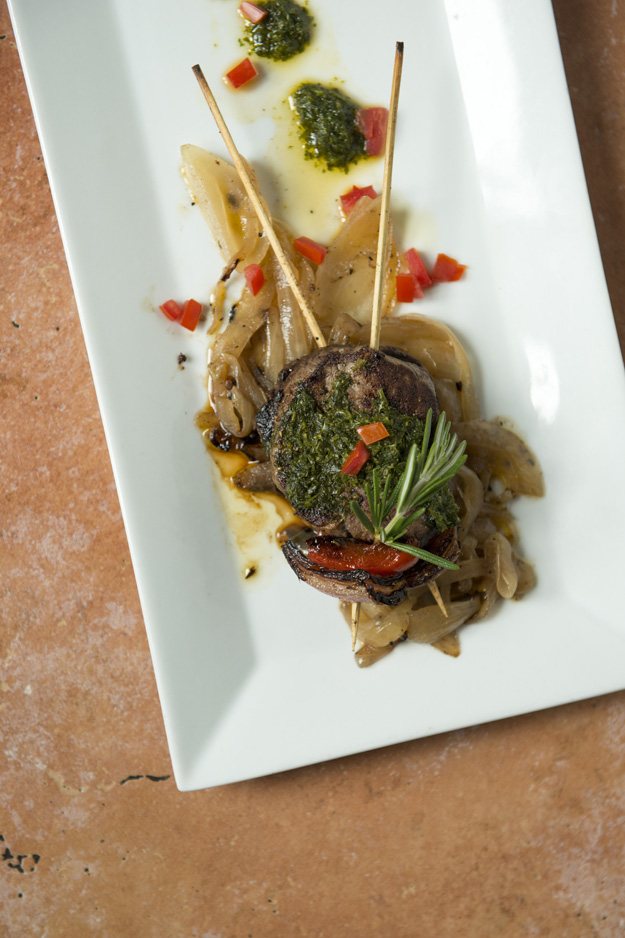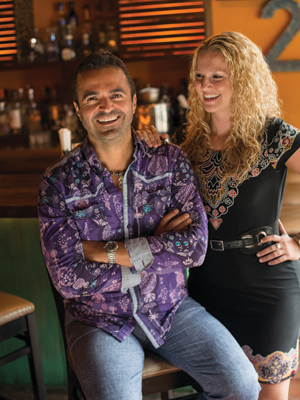
Let's take a moment to clear up some myths about Mexican food, in the name of good eats, shall we? Mexican food doesn't have to be heavy, swimming in cheese, sauce and even more cheese. And it doesn't all have to singe your tongue when you eat it, either. Mesa Modern Mexican restaurant in Downtown Easton wants you to know that, dish after dish. ¡Si! ¡Comemos! (Yes! Let's eat!)
To that end, Mesa would like to also convey that the food served there, ethnographically speaking, is a Latino stew, a combination of Mexican, American, Guatemalan and Colombian influences—and that's just for starters. It's Mexican because, well, everyone loves Mexican food, right? And American because, well, that's where we are. But what about the rest? Well, the Colombian part stems from the heritage of co-owners Rafael Palomino, 50, and Juan Carlos Paredes, 43, longtime friends and business partners who also operate the popular Tapas on Main in Bethlehem. What about Guatemala? You can say gracias a la cocina (thanks to the kitchen) for that—or, more specifically, its 41-year-old chef de cuisine, Juan Garcia, who hails from that Central American country.
...the food served there, ethnographically speaking, is a Latino stew, a combination of Mexican, American, Guatemalan and Colombian influences...
Although these cuisines share many of the same ingredients and flavor profiles, what truly unites them at Mesa is the approach. If you order the black bean enchiladas, a wildly popular dish, it won't be prepared with metallic-tasting canned beans. It won't be loaded down with extra cheese, or sauce. Or extra anything, really. The tacos are not a two-shell double-dipped, deep fried affair—or some combination thereof. “We're serving fresh food that has a Mexican twist. We take the lighter side,” says regional manager (and Easton native) Cara Capobianco.
Occupying the space formerly home to Mex Tex Trio, Mesa had its soft opening in December 2012 and its official grand opening in February of this year. In a short amount of time, Mesa has become known most notably for its tableside preparation of guacamole—it's about as fresh as you can get it. Order it one of four ways: Palomino is the most straightforward choice, with avocado, tomato, red onion, cilantro and lime juice, and it's the one upon which all our other guacs are based. Opt for vegetable, which ups the protein content with quinoa and is served with carrots and celery. Or try it with diced mango and pomegranate (con frutas) or with chorizo (Zapata). Palomino, which is certainly the most familiar to people, is a favorite, but so is Zapata. “The chorizo gives it a nice kick,” says Capobianco.
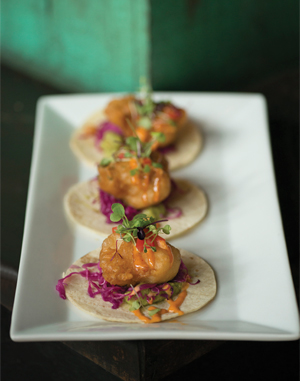
When the restaurant opened, it was the dead of winter, which can be challenging, admits the 27-year-old Capobianco, and the menu was definitely smaller. Within six months or so, owners Paredes and Palomino made some changes, expanding the offerings. “We wanted to bump up the lunch business and give people more to choose from,” she says. These days at Mesa, the menu is more extensive, but it's hard to choose poorly. You can now add a protein—grilled salmon, chicken, shrimp—or portabella mushroom to any salad for an upcharge. There are also more sandwiches and wraps on the menu, such as the Mexican “fish and chip” wrap, a South of the Border twist on the British pub classic, served in a flour tortilla with chipotle tartar remoulade.
The folks at Mesa share an open-minded attitude as the new menu takes a democratic approach, allowing for many possibilities and flavor combinations. “We try to make the menu more Latin than anything else,” Capobianco says. For example, the Mexican Cobb salad swaps Colombian chorizo—sweeter and smokier than its Mexican and Spanish counterparts—for bacon. Colombian specialties such as arepas (corn cakes) grace the lunch menu; the gaucho arepa, with grilled hanger steak, black beans, chimichurri and a sprinkling of cojita cheese, is a surefire winner.
...customers seem to relish the slightly more progressive, refined take on traditional fare.
So far, customers seem to relish the slightly more progressive, refined take on traditional fare. For starters, it's tasty, and it comes from an authentic place that can't be faked: a desire to please. For Garcia, “It feels more like home. I can bring whatever's in my roots and see what people like, and try it out.” Food runs through his blood; he's literally spent his lifetime in the kitchen, helping his mom out as a child with traditional dishes such as rice and chicken, slowly braising in its own broth. He's also receptive to requests, and nowhere is this more evident than in the carne asada burrito, a new item on the lunch menu. “People were asking for this. I don't mind at all; I just like to make people happy,” he says. The tortilla is loaded with grilled hanger steak, rice, beans, tomatillo sauce and cheddar cheese—and French fries.
Yes, a good chef listens to others and his or her own intuition; it comes with the territory. But experience plays a role, too. The typical culinary playground for new dishes comes in the form of the evening specials. For example, the seared branzino, a relatively new entrée on the dinner menu, debuted as a special at Mesa. “We sold 20 to 30 of them that first weekend I had it as a special,” he says. It seems everyone was surprised about its success—except him. In the past, Garcia has worked with branzino, so he knows how to best treat it. At Mesa, served with sweet potato and chipotle gnocchi and a charred tomato garlic sauce, it's quickly become a hit.
Wait, did you say gnocchi? What's gnocchi doing on this menu? Well, here's a hint. Garcia, who isn't even remotely Italian but came to the United States from Guatemala with his family as a teenager, spent many years working in Italian kitchens in the Lehigh Valley. (Most recently, prior to Mesa, at Mama Nina in Bethlehem.) It's only natural that he'd bring some Italian style to so-called “Mexican” flavors. You'll find something inventive and surprising in the form of a fresh blue corn rigatoni, served with spinach, tomatoes and portabella mushrooms in a jalapeño pesto. You'd also find Mexican ravioli, served topped with seared chicken and filled with black beans and Monterey jack cheese—all made in house.
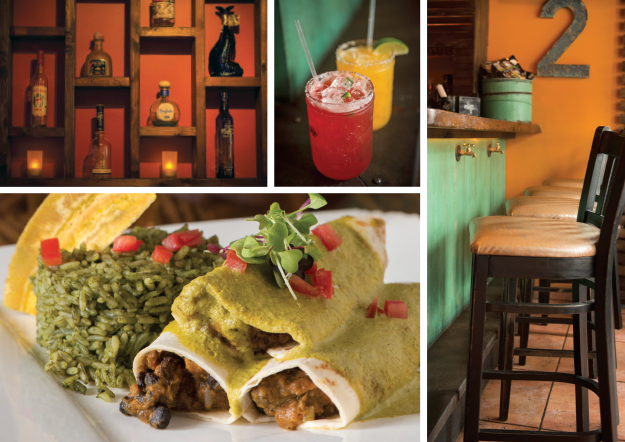

Mesa's unique because you're not likely to encounter a hybridized dish like Mexican ravioli at the plenty of (and plenty tasty) mom and pop, family-run Mexican places in the Lehigh Valley. The restaurant also distinguishes itself because such places are usually BYOB, and Mesa can mix up fresh, fruity sangria and an extensive, creative list of margaritas (strawberry jalapeño is the favorite). You'll also possibly scratch your head at the 40 brands (and counting) of tequila among the three main types: blanco, reposado and anejo, classified based on age. Most people are familiar with (and probably buy) blanco, which is typically bottled right after distillation; reposado requires a minimum of two months; and anejo, a minimum of 12 months. “I don't think you're seeing too many reposado or anejo tequila options on menus in the Lehigh Valley,” Capobianco says. She and the owners believe they are “most likely” the only bar or restaurant in the area offering the super premium Tres Generaciones. “It's aged for a year in oak barrels and is tripled distilled, which is unique,” she says. Another one of Mesa's featured tequilas is Espolón, available in either silver or reposado—it's become the go-to choice for margaritas or even shots, she says. Want to try a lighter-tasting tequila, suitable for sipping? Order up Cruz del Sol. All of these are available to sample—taste four of them in a tequila flight, from a base price of $20.
Speaking of spirits, Mesa's homage to Mexico's most beloved export comes in the form of its tequila room, which is lined with bottles and can seat 30-35 people. (If you've been to Tapas on Main, you've likely noticed its wine wall. Restaurants—and their owners—have personalities and signatures.) Regulars of Tapas may also recognize that Mesa's menu features gluten-free and vegetarian icons next to certain items, too. In fact, there are nearly 20 selections that are either gluten-free or vegetarian (or both), confirming Mexican cuisine's friendliness to all diners. Furthermore, chef Garcia and Capobianco both assert that many items can be prepped for vegans fairly easily; in many cases, it's simply a matter of switching or eliminating a sauce.
You'll also find the kitchen receptive to requests for more lime and salt when it comes to the guacamole. And the heat. Can we talk about the heat? Some people might be confused as to why all the dishes aren't spicy at Mesa. First, Mexican food isn't necessarily always and (unequivocally) spicy by definition, and reading the menu's fine print reveals, “All dishes are spicy by request.” It's kind of a friendly way to serve Mexican food to those who might be worried about the heat. Doing it by request is much easier to customize it to a person's palate. “You can't take the heat away; it's definitely easier to add it,” Capobianco says.
Regardless of whether or not you can take the heat, Mesa doesn't discriminate. They'd rather you just come in, enjoy the spirited vibe (and the spirits), order up some shareable dishes and eat from the bottomless bowl of chips and salsa to your heart's content. It's up to you to tell them to bring the heat.


